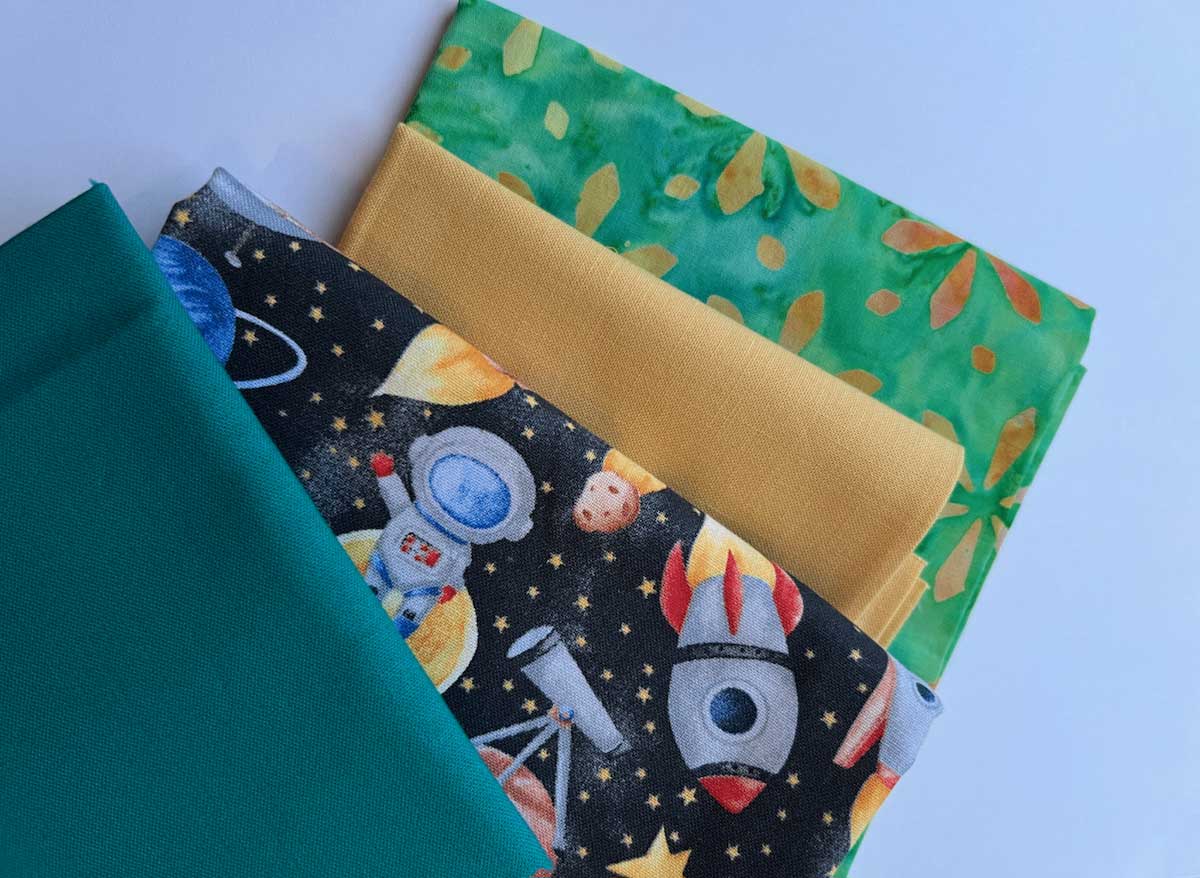
There are a variety of cotton fabrics to choose from, but are all cottons created equal? Let’s look at a few key differences that will help you make your own decisions when it comes to your fabric preferences. We’ll cover important areas to consider, such as thread count, “hand,” availability, and cost.
1. Thread Count
Let’s begin with thread count. Below is a bit of a breakdown to help you see the difference between cottons that are available on the market:
Thread count (per inch)- • Good quality: 60–75
- • High quality: 200
- • Batik quality: 200–220 (needed for the wax relief process)
Any fabric quality can be used for patchwork, but it’s important to keep in mind the type of project you are creating. The higher the quality, the longer a quilt will endure. Lower quality cottons will be more affected by repeated laundering and may have a greater shrink rate overall. On the other hand, a denser thread count will make your projects softer and more durable, as well as less prone to fraying and distortion.
The lower thread count fabrics are commonly found in big box stores and chain craft stores. They offer a wide variety of prints and designs but be sure to keep in mind the quality. If possible, purchase the highest quality you can afford for your patchwork projects.
2. “Hand”
Quilters use all their senses when creating a new quilt, and touch is often an important one to consider. The actual feel of the fabric is not as critical for wall quilts or art quilts, but when making a lap or baby quilt, the feel of the fabric can be an important factor. Select the “hand” that satisfies your needs.
Batik fabric tends to have the softest hand. It is usually more densely woven due to the higher thread count, and results in a more stable product that doesn’t ravel as easily as the lower quality cottons.
Stiff or paper-like fabrics may contain excessive amounts of sizing. When laundered, these fabrics may shrink to a greater degree than higher quality cottons. If mixed with a variety of quality grades, the patchwork project can become distorted in the laundry and affect the end result.
3. Availability
Sometimes, you might not have access to your top fabric choices. The landscape of quilt shops has changed in recent years, with online options booming alongside the decline of brick-and-mortar stores. While convenience is tempting, online shopping presents a new challenge: accurately judging colors and textures through a screen. This can lead to frustration when fabrics don’t quite match in person. But once you are familiar with brands and products you prefer, you can make online choices that meet your quality standards.
4. Cost
Ideally you want to purchase the highest quality you can afford, but realistically, everyone is adhering to their own budget. But know that most quilts are created with love and will not become family heirlooms. Most quilts are made for utility purposes, and will endure normal wear and tear. I prefer that the quilts I make are loved, used, and worn out. This provides me with a sense of satisfaction and the opportunity to make another quilt for that person.
So don’t worry too much about selecting the highest grade fabric you can find. In the end, select the fabrics that speak to you. The fabrics that fit the projects use, have the desired “hand”, a readily available for purchase and fits your budget.
With all that being said – the adventure of selecting just the right fabrics will always be part of the patchwork journey. Happy fabric hunting!
Is there anything on the end of the bolt that says what the thread count is?
I often choose designs on my fabric according to the interests of the receiver! A ballerina or a menorah for my Jewish granddaughter! Certainly personalizes the gift!
I would like to pay by paypal
Very helpful
Seems to be a large gap in quality between good at a top thread count of 75 to high quality at 200. Are the manufacturers that make quality fabric between 75 and 200 thread count?
Used Waverly & it raveled so badly.
No comment
I agree on the quality of fabric. I have found that the better the quality the better the quilt. No fraying for me is important.